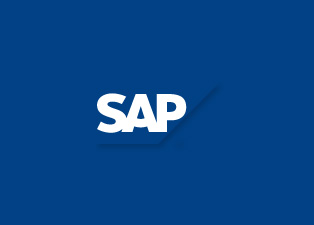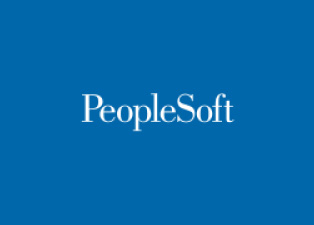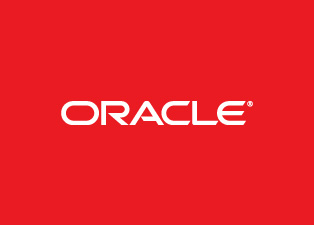Oracle SCM Online Training
Oracle SCM Online Training

Oracle SCM Online Training Course Content:
E-BUSINESS ESSENTIALS
- Navigating in R12 Oracle Applications
- Log in to Oracle Applications
- Navigate from Personal Home Page to Applications
- Choose a responsibility
- Create Favorites and set Preferences
- Use Forms and Menus
- Enter data using Forms
- Search for data using Forms
- Access online Help
- Run and monitor Reports and Programs
- Log out of Oracle Applications
Introduction to Oracle Applications R12
- Explain the footprint of R12 E-Business Suite
- Describe the benefits of R12 E-Business Suite
- Describe R12 E-Business Suite architecture
- Shared Entities and Integration
- Explain shared entities within R12 E-Business Suite
- Describe key integration points and business flows between products in E-Business Suite (EBS)
- Identify Key Business Flows and products involved in E-Business Suite (EBS)
Fundamentals of Flexfields
- Describe Flexfields and their components
- Identify the steps to implement a Flexfield
- Define value sets and values
- Define Key Flexfields
- Define Descriptive Flexfields
Fundamentals of Multi-Org
- Define Multiple Organization (Multi-Org)
- Describe the types of organizations supported in the Multi-Org model
- Explain the entities of Multi-Org
- Explain how Multi-Org secures data
- Identify key implementation considerations for Multi-Org
- Define Multi-Org Access Control
- Explain Multi-Org preferences
- Explain Enhanced Multiple-Organization Reporting
- Explain the concepts of subledger accounting
Fundamentals of Workflow and Alerts
- Explain Workflow concepts
- Describe the benefits of Workflow
R12 Oracle Inventory
Overview of Oracle Inventory
- Receiving Inventory
- Transferring Inventory
- On-hand and Availability
- Issuing Inventory
- Inventory Accuracy
- Discussing Inventory Application Integration
Defining Inventory Organizations
- Overview of Inventory Structure
- Setting up the Inventory Organization Structure
- Defining Organization Parameters
- Defining Subinventories and Locators
Units of Measure
- Defining Units of Measure
Defining and Maintaining Items
- Defining Items Process
- Using Item Templates
- Assigning Items to Organizations
- Categories, Category Sets, and Catalogs
- Deleting Items
Lot and Serial Control
- Setting up Lot Control
- Maintaining Serial Information
- Maintaining Lot and Serial Genealogy
Transaction Setup
- Defining Transaction Types
- Defining Picking Rules
- Defining Account Aliases
- Opening and Closing Accounting Periods
- Setting up Move Orders
- Material Shortage Alerts and Notifications
Issuing and Transferring Material
- Managing Receipts
- Performing Transactions
- Performing Move Orders
- Performing Mobile Transactions
- Managing Shipments
On-hand and Availability
- Using the Material Workbench
- Creating Available to Promise Rules
- Managing Reservations
Material Status Control
- Material Status Setup
Inventory Replenishment
- Defining Replenishment
- Inventory Forecasting Methods
- Replenishment Counting
- Kanban
Inventory Accuracy Fundamentals
- Defining Counting
- ABC Analysis
- Cycle Counting
- Physical Inventory
R12 Oracle Purchasing
Procure To Pay Lifecycle Overview
- Understanding Procure to Pay Lifecycle
- Understanding Oracle Procure to Pay Process
Oracle Purchasing Overview
- Understanding Purchasing Process
- Requisition to Purchase Order
- Overview of the Ordering Process
- The Receiving Process
- Purchasing Integration
Enterprise Structure – Locations, Organizations, and Items
- Understanding the Enterprise Structure
- Defining Locations
- Defining Inventory Organizations
- Establishing Inventory Parameters
- Creating Units of Measure
- Creating a Purchasing Category
- Item Attributes Defining and Maintaining Items
- Describing and Using Category Sets
Suppliers
- Overview of Suppliers
- Entering Supplier Information
- Defining Supplier Site Information
- Managing Suppliers
- Running Supplier Reports
- Understanding Financial Options
- Defining Supplier Profile Options
RFQs and Quotations
- Request for Quotation Lifecycle
- Creating and Maintaining Requests for Quotation
- Creating a Supplier List
- Understanding Quotations Lifecycle
- Creating and Maintaining Quotations
- Sending Notifications
- Defining RFQ and Quotations Profile Options
Approved Supplier Lists and Sourcing Rules
- Creating Approved Supplier Lists
- Understanding Supplier Statuses
- Understanding Supplier-Commodity/Item Attributes
- Understanding ASL Precedence
- Defining Sourcing Profile Options for Approvals
Requisitions
- Understanding the Requisition Lifecycle
- Notifications
- Requisition Structure
- Creating and Maintaining Requisitions
- Supplier Item Catalog
- Creating Requisition Templates
- Running Requisition Reports
- Defining Requisition Profile Options
Purchase Orders
- Understanding Purchase Order Types
- Purchase Order Components and Record Structure
- Creating Standard Purchase Orders
- Creating Contract Purchase Agreements
- Revising Purchase Orders
- Maintaining Purchase Orders
- Identifying Key Reports
- Creating Global Agreements
Automatic Document Creation
- Understanding AutoCreate
- Creating Purchase Documents from Requisitions
- Modifying Requisition Lines
- Running the Create Releases Program
- Understanding the PO Create Documents workflow
Receiving
- Receiving Locations
- Receipt Routing
- Receipt Processing Methods
- Receiving Tolerances
- Entering Returns and Corrections
- Overview of Pay on Receipt
- Running Reports
- Defining Profile Options
Professional Buyer’s Work Center
- Learning Business Benefits of the Buyer’s Work Center
- Understanding Requisitions in the Buyer’s Work Center
- Creating a Purchase Order in the Buyer’s Work Center
- Purchase Agreements in the Buyer’s Work Center
- Creating a Personalized Requisition View
- Understanding Implementation Considerations
- Using Document Styles
- Creating a Purchase Agreement in the Buyer’s Work Center
Document Security, Routing and Approval
- Document Security and Access Levels
- Document Approval – Jobs and Positions
- Creating Position Approval Hierarchies
- Defining Document Security Levels
- Creating Approval Groups
- Defining Document Access Levels
- Using Oracle Workflow for Requisitions and Purchase Order Approvals
- Running the Fill Employee Hierarchy Process
Purchasing Accounting
- Overview of Purchasing Accounting
- Closing the PO Period
- Using foreign currency
- Purchasing Accounting Implementation Considerations
- Setup options
- Accrual Reconciliation Process
Setup Steps
- Setting Up Document Sequences
- Setting Up Key Profile Options
- Setting Up Descriptive Flexfields
- Defining Purchase Order Matching and Tax Tolerances
- Defining Approval Groups and Assignments
- Defining Purchasing Options
- Setting Up Sourcing Rules and Assignments
- Performing Additional System Administration
Purchasing Administration
- Maintaining Oracle Purchasing Database Records
- Using Mass Update on Purchasing Documents
- Using Purchasing MassCancel
- Using Mass Close of Purchasing Documents
- Understanding Purge
- Running the Purchasing Concurrent Processes
R12 Order Management
Overview of Oracle Order Management
- Overview of Oracle Order Management
- What is Oracle Order Management?
- Order Capture and Order Fulfillment
- Oracle Order Management Capabilities
- Order to Cash Lifecycle
- Integration with Other Products
Multiple Organization Access Control Setup
- Organization Structure in Oracle Applications
- Multi-Org Access Control (MOAC)
- Using MOAC in Oracle Order Management
- Setting Up MOAC
Oracle Inventory Setup for Oracle Order Management
- Receipt to Issue Lifecycle
- Inventory Organizations
- Setting Up Locations
- Inter-organization Shipping Networks
- Unit of Measure Conversions
- Order Management Item Attributes
- Item Relationships
Oracle Receivables Setup for Oracle Order Management
- Overview of Trading Community Architecture
- Key Customer Related Concepts in TCA
- Adding Customers in Order Management
- Defining Payment Terms
- Defining Territories in Receivables
- Defining Invoice Sources (Batch Source) – Automatic Transaction Numbering
Oracle Order Management Setup Steps
- Overview of Quick Code or Lookup Types
- Overview of Transaction Types Window
- Workflow in Transaction Types
- Setting up Processing Constraints
- Defining Defaulting and Item Orderability Rules
- Setting up Versioning and Audit History
- Auto-Schedule and Delay Schedule Profile Options
- Defining Credit Usage Rule Sets
Holds, Order Purge, and Exception Management Setup
- Seeded Holds
- Generic Holds
- Specifying Holds Framework
- Order and Quote Purge
- Purge Sets
Basic Pricing Setup
- Overview of Pricing in the Order to Cash Process
- Creating a Price List
- Secondary Price List
- Copy Price List
- Price List Maintenance: Overview
- Add Items to Price List
- Implementation Steps: Setting Key Profile Options
Overview of Shipping Execution
- Shipping Execution Flow
- Delivery and Delivery Lines
- Trips and Stops
- Delivery Leg
- Ship Confirm
Shipping Execution Setup
- Granting Roles To Users
- Freight Carriers
- Transit Times
- Delivery Compliance Screening
- Running Pick Release
- Pick Slip Grouping Rule
- Auto Create Deliveries
- Release Sales Orders for Picking Window
Order Entities and Order Flows
- Order to Cash Lifecycle with Standard Items
- Order to Cash Lifecycle with PTO Models and PTO Kits
- Drop Shipments
- Drop Shipments Across Ledgers
- Back-to-Back Orders
- Managing IR-ISO Changes
- Sales Agreements
- Negotiation Agreement
Drop your query
Most Popular Courses
Achieve your career goal with industry recognised learning paths
What my Client's Say?
-
It was a great course over my expectations. I am eager to have another course wıth you as soon as possıble ~ R. Kamand
-
All in all, it was a very constructive and one in a lifetime experience. I'm so glad that I was part of it.~ T. Engin
-
It was the best decision I had ever made in my life. Although it was expensive for me, but I don't regret even for one second. ~ Maruti Malla
-
Thank you for this great course. I learned a lot of things, I met very nice people and I am happy that I had these 6 crazy weeks with you.".~ Najmul Shar A Baig
-
Very nice and friendly tutor and staff. The course was very fruitful, particularly the input sessions during the first half of it.~ Radha Nandyala
-
It was such great experience, though it was really intensive, it was worth doing it! Cant thank enough all team effort esp Mohan! .~ Rohan Kumar
-
The course was really good because it was a practical course.~ M.Radha patel
-
I liked this experience. Good tutor and nice mates. I will always remember it. ~ Jitu Bavaria











